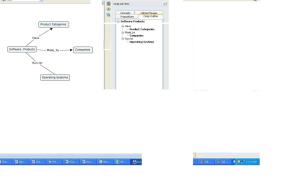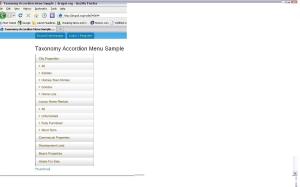Agile Enterprise Taxonomies?
Enterprise taxonomy and common vocabularies was one of the hot topics among the data professionals in master data management, and enterprise data who were at Enterprise Data World in Atlanta, Georgia last week.
Taxonomies, vocabularies, and ontologies seem to be one of the ingredients that is being added to the secret sauce. One enterprise data modeler from a health insurance company put this succinctly, “I use taxonomies to understand my data, not to reorganize the data or content.”
These practical data architects are searching for ways to help them find simplicity in complexity of data management without having to disrupt business critical data flows and best practices.
The driving business forces behind this resurging interest in taxonomies has more to do with driving needs to improve productivity, open flow of information, and efficiency, not search or semantics. Enterprise data managers are looking to overcome a weakness in traditional tools of data management, where it remains a challenge to collect and analyze information in different stovepipes or “swim lanes”. Enterprises need solutions that can allow access to data rapidly but without destroying the data or the data quality processes.
The driving business needs include the requirements to:
- Need to encourage collaboration and data sharing over diverse databases. Instead of finding the one usage, in the agile environment, there is an understanding that terms often have different meanings in different functions. Acquisiition means one thing to a purchasing agent and another to the business strategist. Geoff Mahafsky of Phasic Systems pointed out that learning to listen to, embrace, and respect these variations is a critical first step in an agile strategy.
- Integrate structured and unstructured data. Unstructured data includes content types such as text, documents, reports, digital assets. Understanding a company’s internal operations not only involves data; it also requires understanding policies and programs, the type of information found in text.
- Facilitate access to data. Whether the reason for gathering data across function is for regulatory processes or business intelligence, enterprises need tools and processes that can pass queries to diverse data and content stores at the speed of business. This approach means that queries don’t always have to be have to be translated to SQL; in fact the same analytic question could be passed to multiple technologies such as NoSQL relational graphs, search engines, and semantic along with relational databases.
The buzzword for this cross-functional enterprise data management is called model-driven architecture (MDA) and it can work with existing master data management and reference data programs. Model-driven architecture supports a hybrid solution, which allows multiple technologies and processes.
The use of taxonomies and ontologies is finding its way into some of the leading end-end metadata and analytics products. Examples of some systems and services providers who are taking this approach who presented at this conference include Phasic Systems and Spry, Inc. .
What are skills might taxonomists might have to meet the new requirements for agile enterprise vocabularies?
Ability to listen to and represent differences and commonalities: Discussion about taxonomy can lead to understanding distinctions. A common enterprise vocabulary does not mean single usage, but instead finding ways to represent and respect distinctions between functions.
Knowledge of the tools and processes of semantics, vocabularies, rules and processes that help build bridges between silos and functions. Taxonomists have a background in the best practices in information and knowledge organization based on standards, research and experience. It saves companies from having to reinvent processes which can be costly.
Skills to integrate with a hybrid technology approach. A model based approach means that the system integrator does not need to know the physical model to create a logical model. This requires generalist skills who can comfortably work with different organizations who use different technologies.
Ability to work well with others and respect the work of data governance and quality processes, policies and functions. A taxonomist joins the governance team, so that the work integrates with existing processes. The model-driven approach doesn’t replace existing staff, systems and processes at departmental and functional levels. Those processes exist because they are tested, effective and safe, but these groups may need additional support in adding on an additional service in terms of vocabulary development.
Taxonomist have long known that taxonomies can be built quickly, can model the needs of a business environment, can be improved over time, can be modified or even discarded as the needs of business change. In an era of big data, taxonomy processes might help big data, data management better understand, utilize, share and repurpose their data but taxonomists will need to show their agility. The investment in these skills will be small compared to the ability to adapt and utilize a company’s information assets.
©May 2012 Marlene Rockmore





You must be logged in to post a comment.